

The Mediterranean Sea is one of the busiest waterways in the world accounting for more than twenty percent of the world’s water-borne trade. More than 150,000 ships pass through the Straits of Gibraltar and the Suez Canal carrying over 900 million tonnes of cargo.
There are 87 seaports in the region, some functioning as transhipment centres and others serving their immediate hinterland. Nonetheless, they are an important component of the global shipping network, connecting the Middle East with Asia, North Europe, Africa and the Americas.
Mentioned below are the top 10 Mediterranean ports and their distinguishing features.
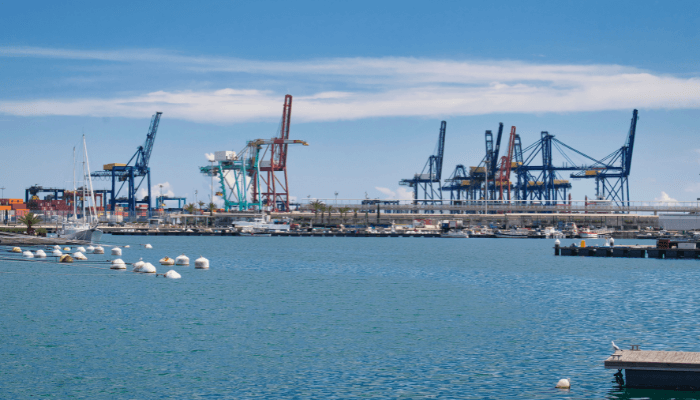

Located on the eastern Mediterranean coast of Spain, at the mouth of the Turia River, Valencia holds the title of being the biggest and busiest port in the region for many years. It deals with all kinds of cargo required by every sector of the economy such as textiles, agro-based products, foodstuff, fuel, chemicals, automobiles, construction material, heavy machinery etc. It has trade relations with European Union countries, and North Africa and caters to a market of 300 million consumers.
The port covers 600 hectares and consists of 72 wharves and 40 operational berths. Valencia also receives passenger vessels to and from the Balearic Islands and Italy. It has emerged as a popular cruise destination in the Mediterranean and welcomed 1,113,000 tourists in 2019.
The fifth busiest port in Europe, it handled about 81 million tonnes of cargo, 5.4 million TEUs, 7900 vessels and 723,000 automobiles in 2019. It contributes significantly to Spain’s GDP by handling more than 85 percent of its import and export trade.
It has a total berthing line covering 12,000 m and storage areas spread over 300 acres. More than 20,000 employees are responsible for smooth port operations, servicing over 8000 ships in a year.
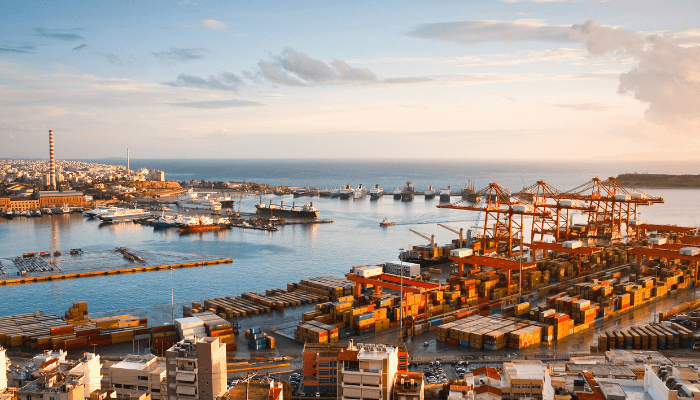

The principal seaport of Athens, Piraeus lies near the Saronic Gulf on the western coast of the Aegean Sea. It is the largest port in the country and one of the busiest container ports in the Mediterranean region.
A centre of communication, finance and administration for the Greek islands, the city was rebuilt after the second world war and houses numerous chemical factories and engineering industries whose finished products are shipped to the Americas, Europe and Africa.
It has multiple shipyards and a flourishing tourism sector. Moreover, Piraeus is the only eastern Mediterranean port that boasts modern infrastructure and facilities that can move large volumes of transhipment cargo.
The container handling facility comprises three terminals with a designed capacity for 8.3 million TEUs and in 2020, the port handled 5.437 million TEUs. The general cargo terminal has an annual cargo capacity of 25,000,000 tonnes. The two RORO terminals can store 15,000 cars and ship 700,000 units annually. The busiest passenger terminal in Europe, Piraeus port, welcomed 1,100,000 tourists in 2019.
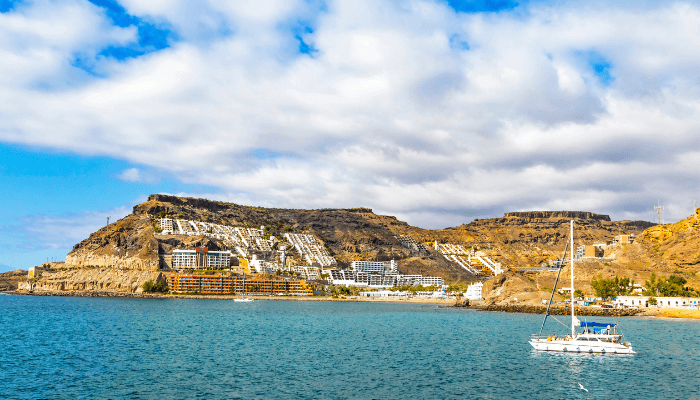

The sixth biggest container port in the Mediterranean, Gioia Tauro is the largest port in southern Italy, lying on the coast of the Tyrrhenian sea. It is positioned centrally amidst the busiest shipping routes connecting the Suez Canal to the Strait of Gibraltar, and East Asia to North Europe and the Americas.
The industrial port can receive the largest container ships in the world and has become the primary transhipment hub of the region. Around 3.14 million TEUs and over 500 container vessels were handled at the port in 2021.
It covers 350 hectares of land area and contains a 400-hectare industrial zone adjacent to the premises. Its infrastructure is made up of a 220 m wide and 8-kilometre long entrance channel, two deep-water basins and three wharves. The main quay houses the Medcenter Container Terminal which also provides logistics services.
Operated jointly by German BLG Logistics Group and Japan’s ICO Shipping Company, the RORO terminal handles mostly Asian brands that are shipped to Japan, Thailand, Morocco, Algeria, Turkey and India.
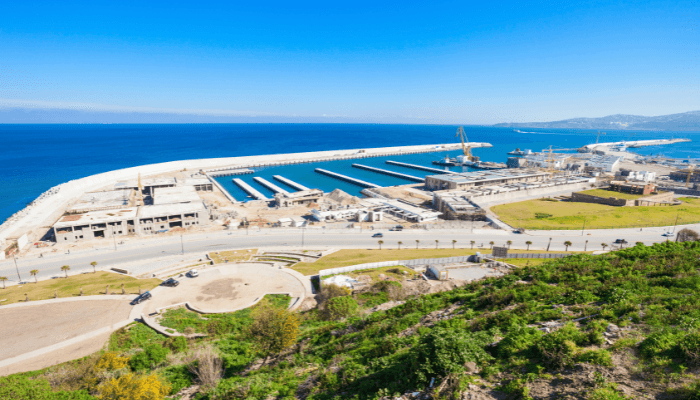

Situated on the northern coast of Morocco at the mouth of the Mediterranean, near the town of Dalia, Tangier-Med port is the biggest in North Africa and one of the largest in the Mediterranean. It emerged as the region’s top container port in 2020 by handling 5.77 million TEUs and is connected to more than 170 ports across 65 countries in Europe, Asia, Africa, the Far East and the Mediterranean.
It has two container terminals spanning over 75 hectares with a quay length of 1600 m. The general cargo facility handled 101 million tonnes of cargo in 2021, while the automobile terminal crossed the 400,000 mark and set a new record.
Additional berths receive oil tankers, bulk carriers, river barges, ferries and high-speed crafts as well. The port is well-protected by a 2,050 m long main breakwater and contains an expansive grain terminal with a 400 m dock and a 15 m draught. Three berths are dedicated to passenger ships carrying more than 50,000 people annually.
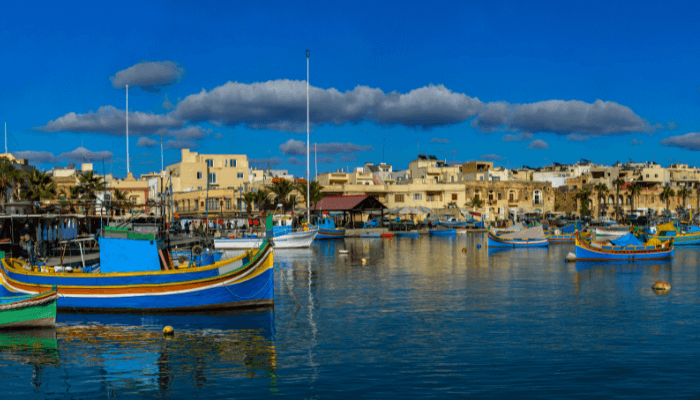

Also known as the Malta Freeport, it lies on the Marsaxlokk Bay on the southeastern end of the island nation. The commercial port flaunts one of the most picturesque and quaint waterfronts in the world. Approximately 2,690 vessels, 5,796,000 tonnes of cargo and 1,480,000 TEUs are handled at the port annually. In 2019, 2.7 million TEUs passed through the Malta freeport.
Marsaxlokk port is situated at the crossroads of Europe, West Africa, Middle East trade triangle and ranks as the third busiest transhipment centre in the Mediterranean.
It is also the twelfth busiest port in Europe handling mostly containerised goods.
Operated by Malta Freeport Corporation, it is divided into four operational areas; the container terminal, an oil terminal operated by Oiltanking Malta, a logistics depot managed by Medserv for the offshore oil and gas sector and warehousing facilities leased to private shipping companies. A new automobile terminal with a 220 m long wharf was constructed in 2016 to accommodate the increased RORO traffic.
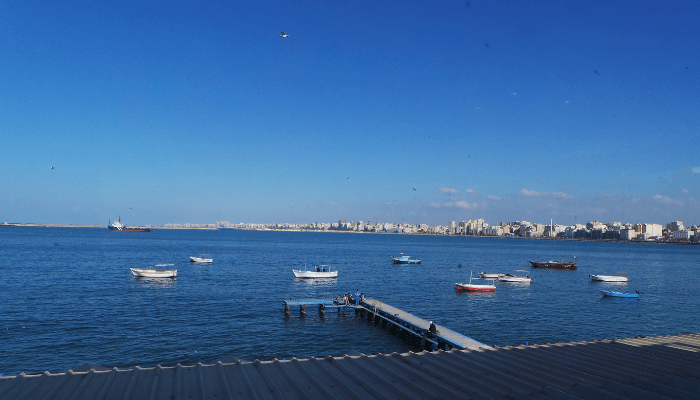

One of the oldest seaports in the world, Alexandria was established in 1900 BC and is the largest port in Egypt. It handles more than 70 percent of Egypt’s foreign trade and contributes two-fifths to the national industrial output. The city’s economy is based on
shipping, manufacturing, food processing and petrochemicals. Alexandria port handles around 34 million tonnes of cargo and 250,000 TEUs annually.
It has two navigation channels and two harbours separated by a peninsula. The eastern harbour is characterised by shallow waters and is unfit for large cargo operations. Hence, trade and commerce is concentrated in the western port area. Recently, a new addition in the form of El-Dekheila Port was made to accommodate greater volumes of cargo originating in the Mediterranean and destined for Europe, Africa and Asia. The terminal also houses an iron and steel complex and a free zone.
Spanning over ten kilometres of land area, Alexandria has specialised terminals for dealing with RORO, passengers, bulk, containers, coal, fertilisers, molasses, timber, livestock and flour. Edible oil is received at the oil dock connected to an offshore refinery through a two-kilometre pipeline.
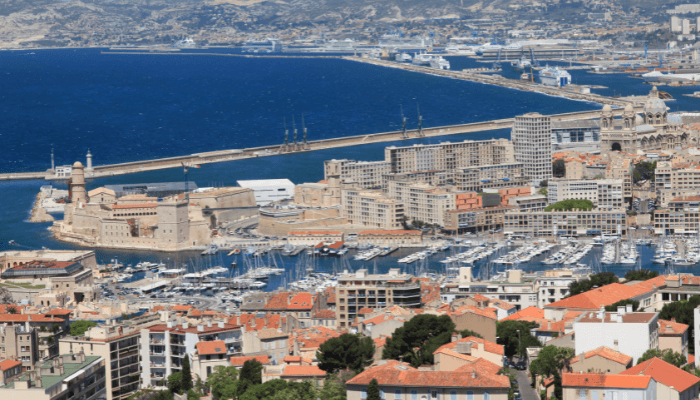

Lying on the western side of the French Riviera on the Gulf of Lion is the 41st biggest port in the world. Marseille is an important Mediterranean port and the busiest commercial harbour in France. A thriving trade centre, it supports the local economy and is well-connected with the region’s inland waterway network. Around 75 million tonnes of cargo and 1.5 million TEUs passed through the facility in 2021.
Its New Harbour houses the prominent container shipping company, CMA CGM as well as Comex, an engineering and hydraulics system enterprise. The busiest oil port in France, it has petroleum refineries and several shipyards. Chemicals, building materials, glass, soap, plastics, textiles, olives, sugar, canned seafood, processed food etc are handled here.
Tourism is another major contributor to the port’s earnings since Marseille is a popular cruise destination. More than 30 cruise ships visit the port’s six cruise terminals annually.
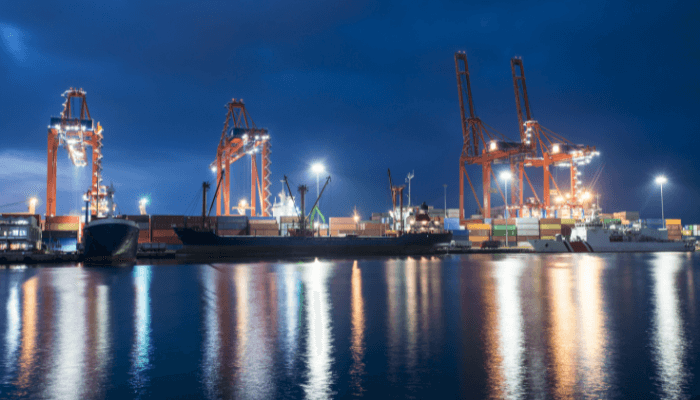

Mersin International port is the principal gateway for the Anatolian and the Mediterranean regions favoured by an expansive free trade zone, a modern railway infrastructure linked to all port terminals and easy accessibility through roads and airways. A leading Turkish seaport, it ranks among the 100 biggest ports in the world.
It is enriched with skilled manpower and provides efficient logistics services. A major transhipment hub for the middle eastern nations, Mersin has extensive facilities dealing with containers, general cargoes, project cargoes, Ro-Ro, dry bulk and liquid bulk.
The port covers 124 hectares of area and handles over 30 million tonnes of cargo and 2,600,000 TEUs every year. It has 21 berths capable of loading and unloading 30 vessels simultaneously.
One of the largest container terminals in southern Turkey is the Mersin international container terminal, serving the wide industrial hinterland. It is also linked to major ports of the world through 20 regular shipping lines.
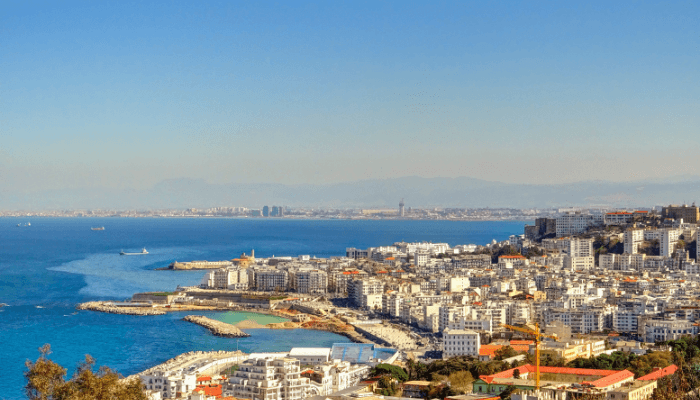

Algiers lies on the slope of the Sahel hills on the Mediterranean coast of Algeria. A principal north African port, it is also a key financial and commercial centre of the country. Around 60 per cent of the nation’s international trade passes through this facility. It contains three deepwater basins, the Old Port, Agha and Mustapha, with a total of 36 wharves protected by five breakwaters.
Main export commodities comprise minerals, wine, esparto, cork, fruit and vegetables. Wood, oil, construction materials and dairy products constitute the largest import items. Approximately 11,000,000 tonnes of cargo, 531,500 TEUs and 373,500 passengers are handled at the port annually.
It has two dry docks spanning 350 metres with a depth of 15.5 metres and a container terminal that was constructed in 1998. Covering 17 hectares, it has a 600 m long wharf and four berths. Ample storage areas are available including 16 warehouses covering 5 hectares for storing 120,000 tonnes of cargo and 12 hectares of open yards with a capacity for 800,000 tonnes of general cargo. The port has a silo for keeping 20,000 tonnes of grains.
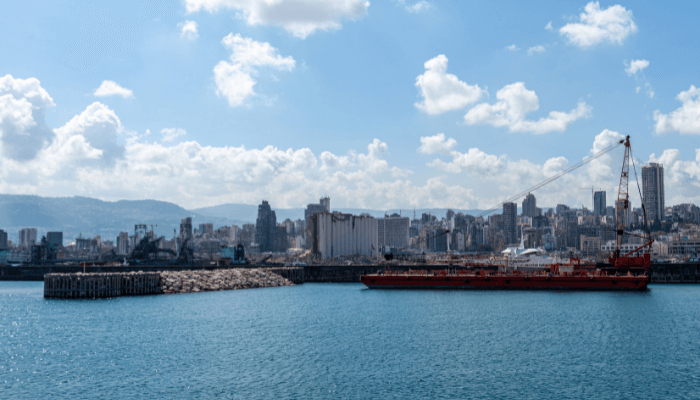

Beirut is the capital city and home of the largest port in Lebanon, lying between Nahr Beirut and Ras Beirut on the Mediterranean shoreline. It ranks among the top ten Mediterranean ports and is considered to be the primary gateway to the Middle East.
Self-financing and periodic expansions since the 1990s transformed it from a regional port to a major transhipment centre. In the 1970s, it maintained trade relations with the neighbouring Arab countries, but today it is connected with more than 60 ports across the world. Favourably positioned near the three continents of Europe, Asia and Africa, it serves commercial vessels arriving from the eastern and the western trade corridors.
Cereals, fruits, vegetables, wool, cement, and manufactured products are the main export commodities whereas imports largely consist of industrial items, timber, iron and petroleum products and derivatives. The Dora and Coral offshore oil terminals are one of the most advanced facilities with high-tech security systems and automated control for detecting any operational abnormalities.
Presently, the Beirut port covers 61 hectares of land area, including a free zone and four basins divided among 16 wharves and the newly constructed container berths. About 2,100 vessels, 5,746,000 tonnes of cargo, 527,200 TEUs and 2,700 passengers are handled at the port every year.
You might also like to read:
Disclaimer: The authors’ views expressed in this article do not necessarily reflect the views of The Marine Learners. Data and charts, if used, in the article have been sourced from available information and have not been authenticated by any statutory authority. The author and The Marine Learners do not claim it to be accurate nor accept any responsibility for the same. The views constitute only the opinions and do not constitute any guidelines or recommendation on any course of action to be followed by the reader.
The article or images cannot be reproduced, copied, shared or used in any form without the permission of the author and The Marine Learners.










We believe that knowledge is power, and we’re committed to empowering our readers with the information and resources they need to succeed in the merchant navy industry.
Whether you’re looking for advice on career planning, news and analysis, or just want to connect with other aspiring merchant navy applicants, The Marine Learners is the place to be.